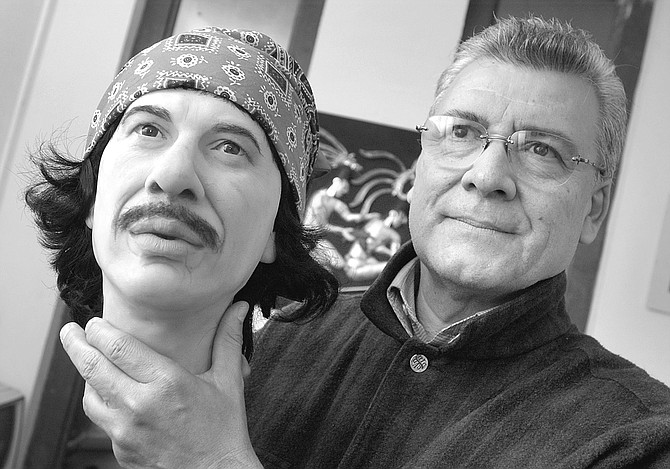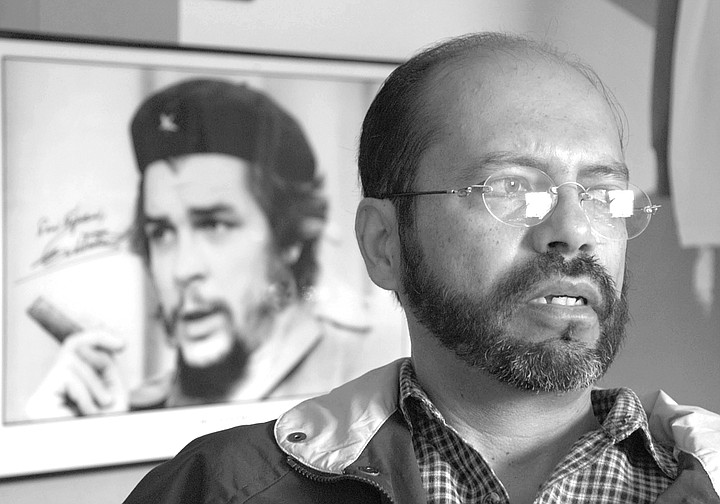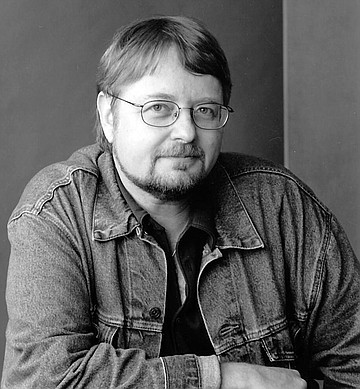 Facebook
Facebook
 X
X
 Instagram
Instagram
 TikTok
TikTok
 Youtube
Youtube


Gary Sehnert works as the United States representative and distributor for several wineries in the Guadalupe Valley ten miles inland from Ensenada. Though he operates from his home in Little Italy, his job takes him to Tijuana and Ensenada three times a week. On Sunday, April 21, Sehnert was alone in his house, doing a few chores and sipping red wine. In his pocket he carried a .22 caliber short-barreled revolver that he says he bought a few weeks earlier for home security. At 10:00 p.m., knowing he had to meet with a client Monday morning in Ensenada, he decided to drive down that night instead of fighting traffic in the morning. He never made it to Ensenada.
By Ernie Grimm, May 23, 2002 | Read full article

One detects a strange sense of pride mixed with despair and anger when listening to environmental activist Silverio de la Mora talk about Tijuana. Once an electrical contractor who helped build the maquiladoras in east Tijuana during the 1980s, de la Mora then became an official in the National Action Party — better known as PAN — when it took control of the municipal government in the late 1980s. With the change in regime, de la Mora was looking forward to seeing a change in the long-standing system of governmental corruption. "But as soon as they touch government, many of these guys corrupt themselves….”
By Ernie Grimm, Jan. 9, 2003 | Read full article

Fear of kidnapping has long spurred the upper classes in Tijuana to build high walls around their homes and mansions. Some even purchase insurance policies that will pay ransoms. But the literary community, never feeling as if they were a target, has never gone to these lengths. The disappearance of well-known poet Noé Carillo Martínez may change that.
By Ernie Grimm, April 17, 2003 | Read full article

"This is Tia Juana," Parra says, "the founder of the city. The historical society of Baja doesn't want to certify it. They say she was a legend."
The other legendary figure is Juan Castillo, better known as Juan Soldado. He was a private in the Mexican army who, while stationed in Tijuana in 1938, was executed for the rape and murder of an eight-year-old girl that many believed had been committed by an officer of his regiment. "Some people say you can pray to him for a miracle," Parra explains.
By Ernie Grimm, March 11, 2004 | Read full article

The thought of importing motorcycles — Chinese or otherwise — to resell in Northern Baja California came to him almost two years ago. "The idea," Severiano says, "was to bring something that was viable economically in Tijuana, transportation-wise. People here spend $60 to $100 a month just on cabs….
"This is the size motorcycle that pizza places and restaurants all over Tijuana use for deliveries. There goes one there." He points to a motorcycle buzzing west down the boulevard. "It's a 125 cubic-centimeter, one-cylinder engine. This is $1200.”
By Ernie Grimm, March 25, 2004 | Read full article

As a blond, blue-eyed Mexican kid — a guërro in the Mexican dialect — Urrea found he had no clan to belong to in Logan Heights. "The black kids would beat me up for being white," he chuckled. "The Mexican kids would beat me up for being white, the white kids knew I was Mexican, so they would want to beat me up, so I thought, 'Screw this, I am going to stay home, man. I am going to stay home and read Mark Twain.'"
By Ernie Grimm, June 24, 2004 | Read full article



Gary Sehnert works as the United States representative and distributor for several wineries in the Guadalupe Valley ten miles inland from Ensenada. Though he operates from his home in Little Italy, his job takes him to Tijuana and Ensenada three times a week. On Sunday, April 21, Sehnert was alone in his house, doing a few chores and sipping red wine. In his pocket he carried a .22 caliber short-barreled revolver that he says he bought a few weeks earlier for home security. At 10:00 p.m., knowing he had to meet with a client Monday morning in Ensenada, he decided to drive down that night instead of fighting traffic in the morning. He never made it to Ensenada.
By Ernie Grimm, May 23, 2002 | Read full article

One detects a strange sense of pride mixed with despair and anger when listening to environmental activist Silverio de la Mora talk about Tijuana. Once an electrical contractor who helped build the maquiladoras in east Tijuana during the 1980s, de la Mora then became an official in the National Action Party — better known as PAN — when it took control of the municipal government in the late 1980s. With the change in regime, de la Mora was looking forward to seeing a change in the long-standing system of governmental corruption. "But as soon as they touch government, many of these guys corrupt themselves….”
By Ernie Grimm, Jan. 9, 2003 | Read full article

Fear of kidnapping has long spurred the upper classes in Tijuana to build high walls around their homes and mansions. Some even purchase insurance policies that will pay ransoms. But the literary community, never feeling as if they were a target, has never gone to these lengths. The disappearance of well-known poet Noé Carillo Martínez may change that.
By Ernie Grimm, April 17, 2003 | Read full article

"This is Tia Juana," Parra says, "the founder of the city. The historical society of Baja doesn't want to certify it. They say she was a legend."
The other legendary figure is Juan Castillo, better known as Juan Soldado. He was a private in the Mexican army who, while stationed in Tijuana in 1938, was executed for the rape and murder of an eight-year-old girl that many believed had been committed by an officer of his regiment. "Some people say you can pray to him for a miracle," Parra explains.
By Ernie Grimm, March 11, 2004 | Read full article

The thought of importing motorcycles — Chinese or otherwise — to resell in Northern Baja California came to him almost two years ago. "The idea," Severiano says, "was to bring something that was viable economically in Tijuana, transportation-wise. People here spend $60 to $100 a month just on cabs….
"This is the size motorcycle that pizza places and restaurants all over Tijuana use for deliveries. There goes one there." He points to a motorcycle buzzing west down the boulevard. "It's a 125 cubic-centimeter, one-cylinder engine. This is $1200.”
By Ernie Grimm, March 25, 2004 | Read full article

As a blond, blue-eyed Mexican kid — a guërro in the Mexican dialect — Urrea found he had no clan to belong to in Logan Heights. "The black kids would beat me up for being white," he chuckled. "The Mexican kids would beat me up for being white, the white kids knew I was Mexican, so they would want to beat me up, so I thought, 'Screw this, I am going to stay home, man. I am going to stay home and read Mark Twain.'"
By Ernie Grimm, June 24, 2004 | Read full article
Comments